
The Seneca Institute – Seneca Junior College was an African-American school in Seneca, South Carolina, from 1899 to 1939. This was in a period of segregated public schools in South Carolina.

The Seneca Institute – Seneca Junior College was an African-American school in Seneca, South Carolina, from 1899 to 1939. This was in a period of segregated public schools in South Carolina.
The Seneca Institute was a Christian, primary and secondary school for African Americans that was founded in 1899 by the Seneca River Baptist Association. It occupied about 8 acres (3.2 ha) in Seneca, South Carolina. The site is bounded by West South Third and South Poplar Streets and Scotland Road. It was founded to promote education for African-American children at a time in which there was no secondary school for African Americans in Oconee County.
The first president of the Seneca Institute was Rev. Dr. John Jacob Starks. He was born in what is now rural Greenwood County. He served the Seneca Institute for thirteen years. He left to become the president of Morris College in Sumter, South Carolina. After serving as its president from 1912 to 1930, he became the president of Benedict College in Columbia, South Carolina. He served as its president until his death.
With the addition of two years of college instruction in 1926, the Seneca Institute was renamed the Seneca Junior College. In addition to the primary and secondary classes, it served as a junior college and teaching training course.

In 1937 a Faith Cabin Library was built on campus with books donated by students at Oberlin College. [1]
The school struggled during the Great Depression. It was closed in 1939.
The Seneca Institute had students who lived in the community and boarders. It had a brick dormitory for girls, the B.S. Sharp Dormitory for boys, the A.P. Dunbar Hall for classes, and a library. Except for the log cabin library that is still standing, the buildings were razed in 1963. [2] [3]
During the period of segregated education, there were other private and public schools in Oconee County. The Norrel School was found by Northern Presbyterians. It began as a church and school on Fairplay Street in front of Mt. View Cemetery. The school closed prior to 1939.
The Oconee County Training School, which was a teaching training school for African Americans, was a public institution founded in 1925. Its programs included home economics, industrial arts, and agriculture. In 1955, its building was used for East End Elementary School.
Blue Ridge High School was built in 1955 to serve the African-American community. It continued as the African-American high school in the Seneca area until 1969 when the county public schools were integrated. The building was renamed Seneca Junior High School and later Code Elementary School. [4]

The Seneca Institute – Seneca Junior College educated many African Americans that continued to live in the Seneca area as well as the nation. This included many physicians, dentists, clergymen, and educators.
In 1978, the Seneca River Improvement Association dedicated the Seneca Institute Family Life Center, a multi-purpose building, as a community center. It is located on the old campus of the Seneca Institute – Seneca Junior College.
Seneca may refer to:

Oconee County is the westernmost county in the U.S. state of South Carolina. As of the 2020 census, the population was 78,607. Its county seat is Walhalla and its largest community is Seneca. Oconee County is included in the Seneca, SC Micropolitan Statistical Area, which is also included in the Greenville-Spartanburg-Anderson, SC Combined Statistical Area. South Carolina Highway 11, the Cherokee Foothills National Scenic Highway, begins in southern Oconee County at Interstate Highway 85 at the Georgia state line.

Seneca is a city in Oconee County, South Carolina, United States. The population was 8,102 at the 2010 census. It is the principal city of the Seneca Micropolitan Statistical Area, an (MSA) that includes all of Oconee County, and that is included within the greater Greenville-Spartanburg-Anderson, South Carolina Combined Statistical Area. Seneca was named for the nearby Cherokee town of Isunigu, which English colonists knew as "Seneca Town".
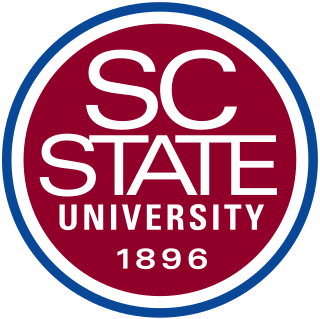
South Carolina State University is a public, historically black, land-grant university in Orangeburg, South Carolina. It is the only public, historically black land-grant institution in South Carolina, is a member-school of the Thurgood Marshall College Fund, and is accredited by the Southern Association of Colleges and Schools (SACS).

Shaw University is a private Baptist historically black university in Raleigh, North Carolina. It is affiliated with the American Baptist Churches USA. Founded on December 1, 1865, Shaw University is the oldest HBCU to begin offering courses in the Southern United States. The school had its origin in the formation of a theological class of freedmen in the Guion Hotel. The following year it moved to a large wooden building, at the corner of Blount and Cabarrus Streets in Raleigh, where it continued as the Raleigh Institute until 1870. In 1870, the school moved to its current location on the former property of Confederate General Barringer and changed its name to the Shaw Collegiate Institute, in honor of Elijah Shaw. In 1875, the school was officially chartered with the State of North Carolina as Shaw University.

Dillard University is a private, historically black university in New Orleans, Louisiana. Founded in 1930 and incorporating earlier institutions founded as early as 1869 after the American Civil War, it is affiliated with the United Church of Christ and the United Methodist Church.
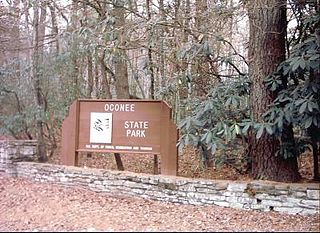
Oconee State Park is a state park located in the Blue Ridge Mountain region of South Carolina. This 1165-acre (472 ha) park has several recreational opportunities to choose from. They include cabins, camping, fishing and boating in the two small lakes located on the park grounds, hiking on eight nature/hiking trails, and several picnic and meeting facilities.
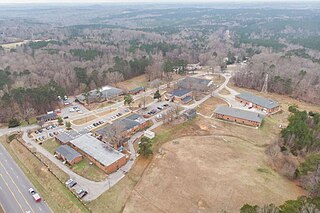
Kittrell College was a two-year historically black college located in Kittrell, North Carolina from 1886 until 1975. It was associated with the African Methodist Episcopal Church. After the college closed, many of its facilities became the Kittrell Job Corps Center campus.
Marshall Joyner Parker was a Republican politician from the U.S. state of South Carolina.

Timothy Martin Cain is a United States district judge of the United States District Court for the District of South Carolina. He was formerly a South Carolina state judge and a law associate of Senator Lindsey Graham.
The history of North Carolina Agricultural and Technical State University, the first land grant college for people of color in the state of North Carolina, can be traced back to 1890, when the United States Congress enacted the Second Morrill Act which mandated that states provide separate colleges for the colored race. The "Agricultural and Mechanical College for the Colored Race" was established On March 9, 1891 by an act of the General Assembly of North Carolina and began in Raleigh, North Carolina as an annex to Shaw University. The college made a permanent home in Greensboro with the help of monetary and land donation by local citizens. The college granted admission to both men and women from 1893 to 1901, when the board of trustees voted to restrict admission to males only. This policy would remain until 1928, when female students were once again allowed to be admitted.

Bettis Academy and Junior College is a historic African-American Baptist school complex and national historic district located near Trenton, Edgefield County, South Carolina. Bettis Academy and Junior College was established in 1881 and closed in 1952. The complex now consists of three contributing buildings and one contributing site, all dating from the last 20 years of the institution. The remaining buildings are the rock-faced Alexander Bettis Community Library (1939); a bungalow-form building with a dual-pitched pyramidal roof; the stuccoed brick Classroom Building (1935); and the rock-faced Colonial Revival style Biddle Hall (1942).
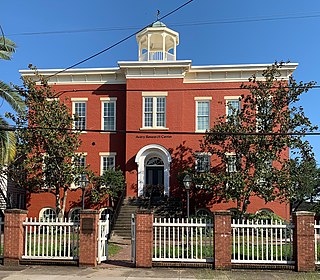
The Avery Research Center for African American History and Culture is a division of the College of Charleston library system. The center is located on the site of the former Avery Normal Institute in the Harleston village district at 125 Bull Street in Charleston, South Carolina. This historic secondary school trained Black students for professional careers and leadership roles, and served as a hub for Charleston’s African-American community from 1865 to 1954.
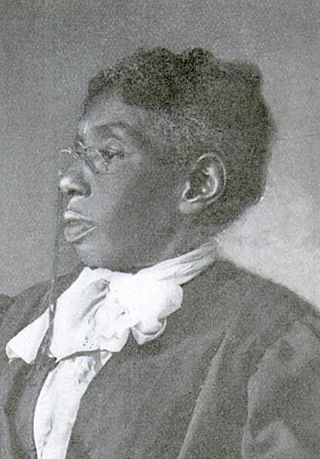
Jane Serepta Dean was born into slavery in northern Virginia, freed as a result of the American Civil War, and became an important founder of churches and Sunday Schools for African Americans in northern Virginia. Dean founded the Manassas Industrial School for Colored Youth, which for more than four decades was the only institution of secondary education available to African-American youth in Northern Virginia, and one of only two in the state without overt religious affiliation.
The Greenville Eight was a group of African American students, seven in high school and one in college, that successfully protested the segregated library system in Greenville, South Carolina in 1960. Among the eight was Jesse Jackson, a college freshman. As a result of the staged sit-in, the library system in the city integrated.

Faith Cabin Libraries were a system of libraries created in South Carolina and Georgia providing library services to Black Americans who were not allowed to use public libraries because of segregation laws.

The Faith Cabin Library at Seneca Junior College is a Faith Cabin Library built to serve the African American community in Seneca, South Carolina. It was built on the campus of the Seneca Junior College. The log cabin library building was named to the National Register of Historic Places on November 14, 2012.
A training school, or county training school, was a type of segregated school for African American students found in the United States and Canada. In the Southern United States they were established to educate African Americans at elementary and secondary levels, especially as teachers; and in the Northern United States they existed as educational reformatory schools. A few training schools still exist, however they exist in a different context.
The Visanska-Starks House and Carriage House, built in 1900, is an example of the social history of Columbia, South Carolina’s first suburb: Waverly Historic District. The history of the house includes Antebellum white, Jewish, and African-American inhabitants over several decades.Antebellum inhabitants